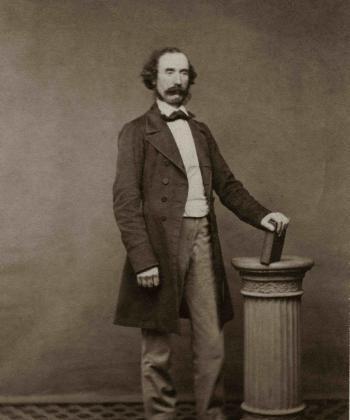Trees are probably the most familiar species of plant life growing in our environment; they are also the largest and have a history of longevity. The oldest known tree at present has reached the age of four thousand six hundred years. It is still healthy and active just as trees are. This tree is one of a group of pine trees in the White Mountains in California. Many trees have reached very advanced ages and are still strong and healthy.
There are trees which retain their foliage all year around, just as there are trees which shed their leaves every autumn. Many more types of tree life exist and they all play a specific role in this environment of ours. In the spring time the whole landscape is awakened from its winter sleep by the arrival of blossoms of the most delicate hues and brightness while kindling hope and joy in our hearts for the future. We know then that we have the joys of spring and summer to look forward to at the awakening of the new season’s life.
There is a close relationship between us humans and trees. For example there is a fundamental link to our breathing system and trees. We breathe in air, which is mainly oxygen, and we exhale carbon dioxide which is our body waste. The tree will inhale the carbon dioxide, purify it and exhale it as oxygen, thereby providing pure fresh air to meet nature’s and mankind’s needs. This is a most precious gift to us all.
Trees are important in the world of nature. They maintain a balance in the ecology in several ways. They provide sounds and harmonies which inspire the poet and the composer of music to absorb new strands of sound into the creative zone of their minds. Birds and small life make their homes within trees from where we get the dawn and dusk chorus, as well as day long bird song. For many migrating birds and those such as homing pigeons the tree is ideal as a halfway house, or a place to rest a while to build up sufficient energy to complete the homeward trail.
Most people find it relaxing to linger awhile in the shade of trees, especially in warm sunny weather. There we hear the sounds of birds mingled with animal sounds and the harmonies of wind blowing through the trees.
An artistic balance between light and shade alongside the shadows and hues which evolve
from the tree creates the scene for the visual artist to formulate his next work of art, perhaps the scene or basis of a new painting will be visualised within his seeing eye.
The moisture content within the soil in the domain of the tree is balanced through the retention of moisture in the body and root mass of the tree. From there it is released as required to the plant life within its circumference. The tree’s roots spread both horizontally over a wide area and deeply into the ground, which means that it will connect with wells and the water table and balance those for the good of the plant life and other life within its growth area.
The wind and storms interact with and within the tree’s branches and foliage to temper the wind speed. As the storm hits the tree at a high speed it has no choice but to reduce its speed there by lowering the wind velocity and reducing the likelihood of any wind damage occurring. Where there is an absence of trees in the path of high winds the outcome might be one of severe damage to structures within its path.
Trees also take on whatever the elements have in store for them. They do not succumb to winter weather; instead they take on the snow and frost as it hits them. When laden with snow they gleam and glisten in the cold and become a most picturesque landscape just as we sometimes see on Christmas cards. This is an uplifting sight to experience, the beauty of nature and the benevolence of trees.
This bond between our selves and trees is not just something of our time; in earlier times parliamentary meetings were held in the shade and shelter of trees. The delegates usually arrived on horseback or on foot. Many specific trees were chosen for this function and in time gave its name to the district which may not have changed to this day. Many other functions whether religious or social were carried out in the shelter and safety of trees. Many villages and towns now stand on the sights where these meetings were held. Perhaps some of these trees still exist.
There is another close link between mankind and trees. It is the ceremony or convention of planting a specific tree in a specific place to commemorate a particular birth, happening or other event of particular significance in some one’s life. This has been the case from ancient times and still continues to this day.
We do attach much importance to protecting and saving tree life. This is evidenced by the fact that many organisations for the protection of trees exist throughout the world.
Many botanists who have close contact with tree life often comment on the fact that when in close proximity with trees there is a sense of tranquility and harmony in the presence of the tree. Recently a historian published a book on trees and recorded his experience of the wonderful sensation of a sacred nature which he experienced when in the presence of trees. He received a response from many people who had a similar experience. From all this it is reasonable to say that trees have a special role in maintaining a balance and harmony in our lives and in protecting our ecology.



